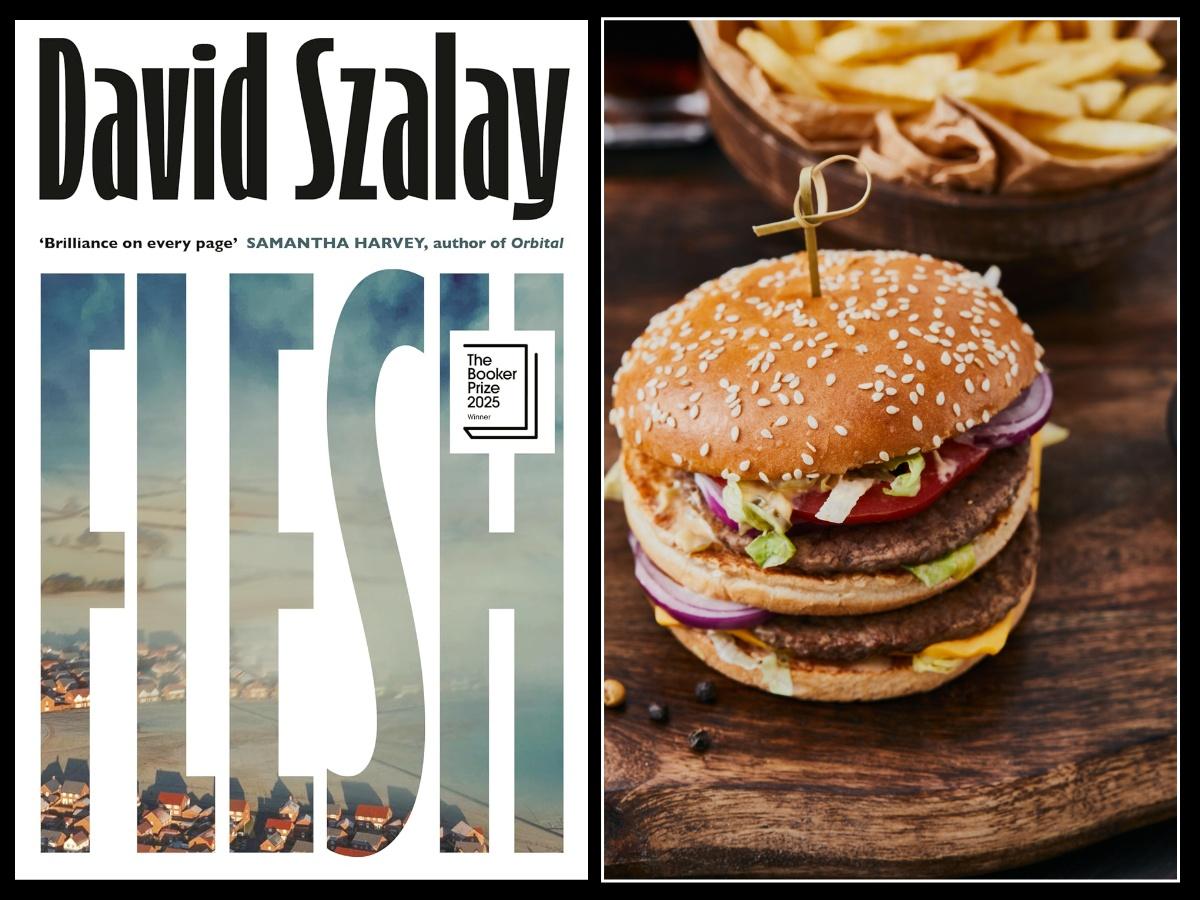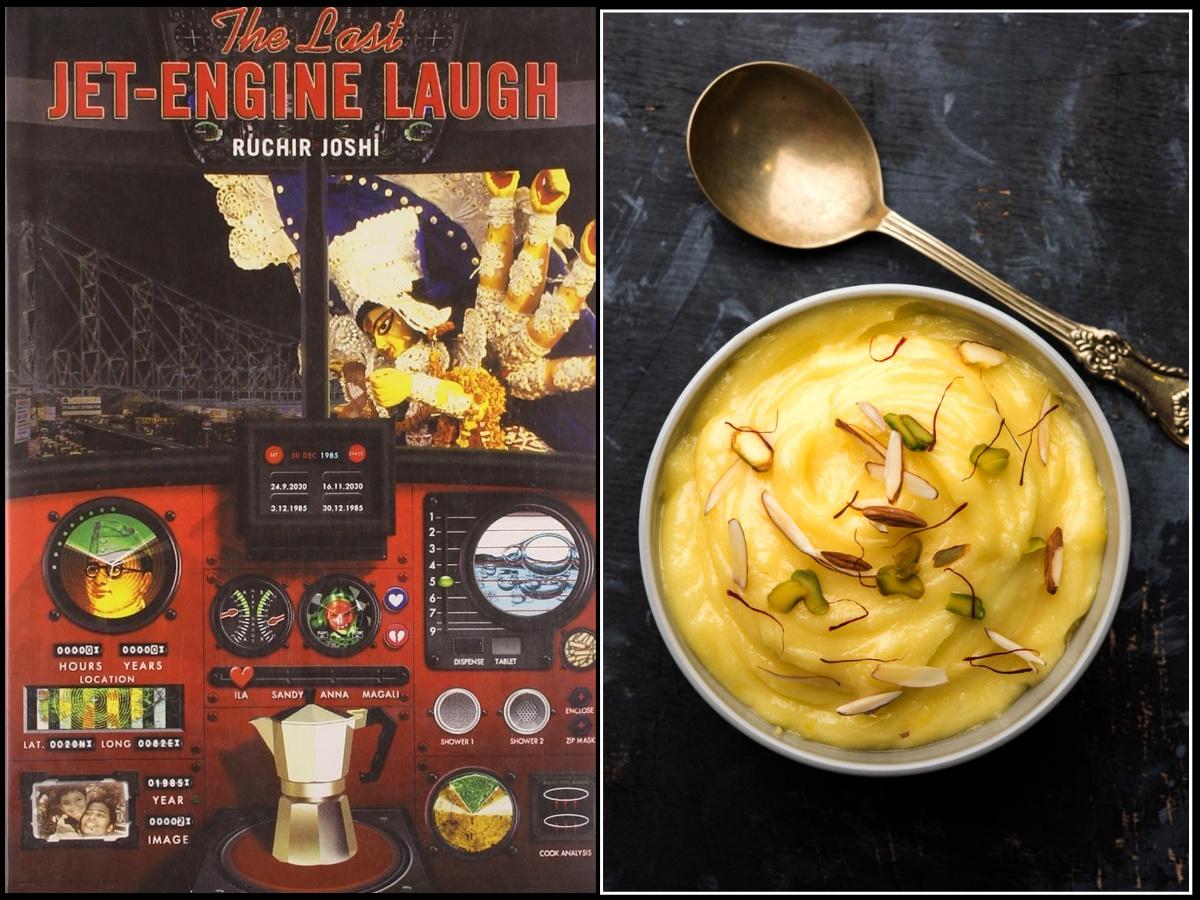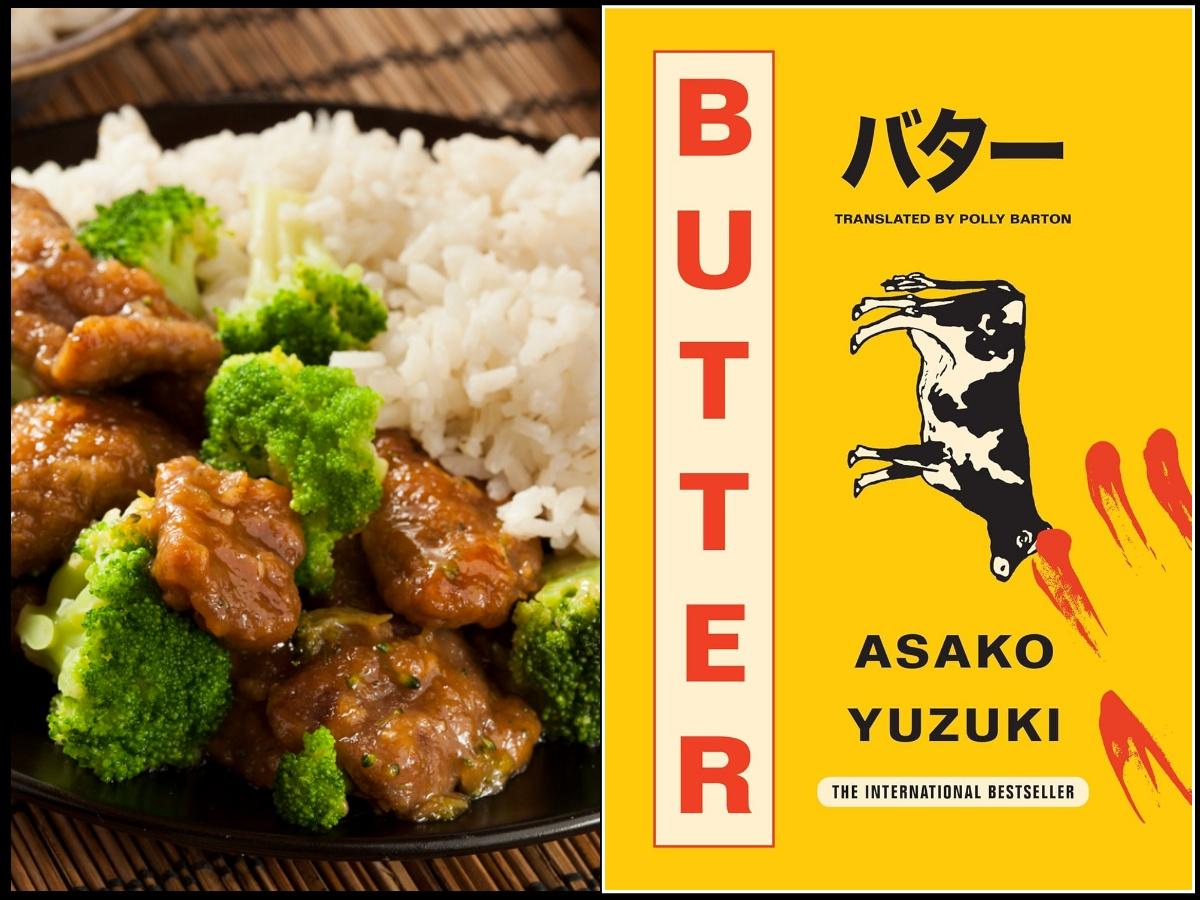David Szalay’s Booker Prize-winning Flesh trains a cold light on the awkward, shame-laced education of a young body in the beginning of the novel. It presents István’s teenage fumblings, cigarettes, mall visits, awkward attempts at reciprocity, and repeatedly returns to the small domestic acts that teach him how to be a man: the shared trolley at the supermarket, a bowl of Somloi galuska, the white noise of cigarette smoke. Szalay assembles brief, tactile scenes in which food and sex, appetite and power, fold into one another.
Food in Flesh operates both as currency and as curriculum. István’s awkward first kisses happen after dessert; the woman, a neighbour, offers him Somloi galuska, a decadent Hungarian trifle made of three types of sponge cake, rum syrup, vanilla custard, and chocolate sauce, served with whipped cream. And then, with the casualness of someone who confuses care with privilege, kisses him. The domestic ritual of eating becomes the stage for transgression and schooling. The sensory detail of the kitchen, the jar of kovászos uborka fermenting on the balcony, the glass bowls, the paper napkin, grounds scenes of moral ambiguity. Eating, sharing, being fed: these are the ways István learns what adults expect, and how desire is negotiated, normalised, or shamed.

Szalay’s contribution is his cool minimalism, which converts those domestic, often humiliating, moments into rites of passage. István’s furtive McDonald’s meal after sex; the Big Mac as a deflated punctuation to an act that should, by cultural script, confer transformation. These are Szalay’s small ironies. The novel asks: when the rite is perfunctory, what becomes of the initiate? István leaves the woman’s flat the same person in essence; yet each bowl of dessert, each cigarette, leaves a trace of education on his body and conscience.

Food as a tool and weapon

A still from the 1992 film adaptation of The Lover by Marguerite Duras.
That linking of appetite and becoming has a long literary lineage. Marguerite Duras’s The Lover frames a young girl’s awakening as an education of appetite. Of being loved, fed, and thereby shaped by an older man’s economy of desire. The affair is as much gustatory as erotic. In a crucial scene, we see the girl with her family seated at a table with her two brothers wolfing down food, barely making conversation or eye contact with her boyfriend who has hosted the meal. It’s a scene filled with lessons on hunger, inequality, class and power around food and the coming of age of the 17-year-old girl.

Author Han Kang was awarded the Nobel Prize for Literature 2024.
| Photo Credit:
Getty Images
Han Kang’s The Vegetarian, which won the Booker prize in 2016, presents hunger as refusal. In the novel, abstinence is an ethical and bodily revolt that turns eating into a site of psychic fracture. Where Szalay’s scenes show appetite as initiation into a sometimes brutal adult world, Kang’s Yeong-hye chooses not to eat as an act that signals autonomy and, ultimately, self-erasure. Both authors, however, make clear that food is never neutral: it is moral, erotic, and existential.

In Ruchir Joshi’s The Last Jet-Engine Laugh (2001), a bowl of shrikhand passed around at a party lends the busy scene a touch of sexual farce and a moment when food and flirtation collapse into laughter and embarrassment. Likewise, Khalid Jawed’s Nemat Khana (The Paradise of Food) transforms the kitchen and its tools into metaphors for human relations and craving, where food stands in for both inheritance and loss. The novel states: “Food and nourishment move human life, but also corrupt human life.” Much like how pairing of sustenance and danger echoes the food/ sexual politics in Szalay’s novel.
Consider Butter by Asako Yuzuki, where butter-rich rice and soy-sauce-soaked meals become charged sites of sensuality and power. Yuzuki shows how cooking is seduction, butter is weapon, and eating becomes confession. Food becomes erotic, indulgent, a tool for murder and transgressive all at once.

Schooling begins at the table
If Butter simmers with moral unease, Dominican-American writer and poet Elizabeth Acevedo’s With the Fire on High transforms cooking into self-expression and healing. Her protagonist, Emoni, is a 17-year-old unwed young mother with culinary brilliance, who blends flavours from her heritage into dishes that are both memory and desire. Appetite here is not guilt or rebellion but possibility and the fire that sustains.

A still from the 1992 movie adaptation of Laura Esquivel’s novel, Like Water for Chocolate.
Likewise, in Like Water for Chocolate by Mexican-American writer Laura Esquivel, the recipes act as spells that channel emotion into sustenance. Appetite is then a grammar of becoming. For adolescents, food often precedes vocabulary; taste teaches what words cannot. In Flesh, the young István learns to be seen, to be touched and then judged, around food and by the kitchen table. The lessons are imperfect: confusion, shame, and a strange mix of disgust and arousal. Szalay refuses grand epiphanies; instead, he trusts the aggregate force of domestic scenes, bowl by bowl, kiss by kiss, to narrate a life.
Many of these novels remind us that the first schooling happens at the table. Appetite, whether met or denied, is where we first learn whose hunger counts, and what it costs to be fed.
The writer is the author of ‘Temple Tales’ and translator of ‘Hungry Humans’. She is working on her first cookbook.
Published – November 17, 2025 02:39 pm IST
